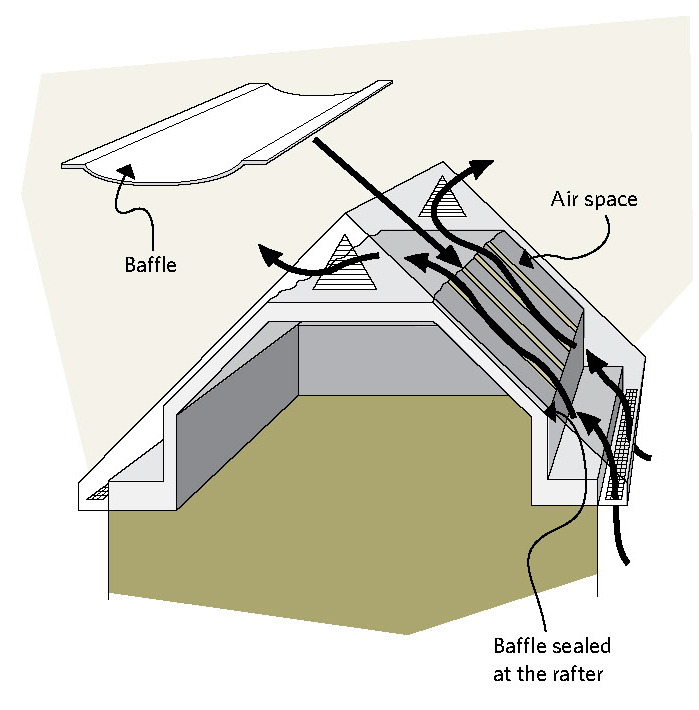Cramped attics

Figure 5-19 Ventilation occurs between sections through attic rafter vents installed in the rafter section
There are three options for insulating an attic that is too cramped to work in:
- Insulate on top of the existing roof (see Ice dams).
- Add rigid board and drywall to the ceiling if there is adequate headroom.
- Have an experienced contractor blow in dense-pack loose-fill insulation.
The last two options can also be done together. The first and last methods may apply where there is inadequate headroom.
There will likely be no way of installing a new sheet-material air barrier. If one does not already exist, it should still be acceptable to install insulation if there is no evidence of moisture problems, if humidity levels in the house are reasonable and if any air leaks through the ceiling into the attic are sealed. You can achieve added protection by painting the ceiling below the attic with latex vapour barrier paint (ask paint suppliers or manufacturers) or two coats of oil-based paint.
Ensure that the contractor prevents insulation from entering the eaves and blocking the ventilation. If there are any recessed light fixtures, chimneys or other sources of heat in the attic, make sure precautions are taken to avoid creating a fire hazard.
Ventilating cramped attics can be difficult because of the difficulty of creating an adequate airflow. Where the roof extends past the exterior walls, it may be possible to use soffit vents in combination with roof vents or built-up ridge vents.
Many houses with cramped attic spaces lack eaves. In such cases, approach ventilation with caution. The best approach is to carefully seal the ceiling below the attic from inside the house and then insulate without installing additional vents.
If possible, check the roof space for moisture problems during or just after a cold snap in mid-winter. Some frost is to be expected, but if the buildup is especially heavy, you will have to vent the space, thoroughly seal all air leaks and reduce humidity levels in the house. Check with local building authorities to determine which procedures are permitted in your area.